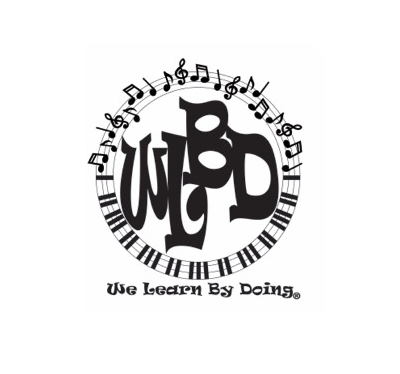Self-Esteem Thoughts
Activity #1 – Be an Occupation. Children like to mimic and asking a child to mimic individually an occupation like be a piano player, teacher, animal trainer, ballet dancer or any other occupation created by you. It is fun to watch children create and use their imagination to fulfill the occupation.
Activity #2 – Be a Geometric Shape. Children individually are asked to use their bodies and make a circle, or square, or triangle, or make designs like a flower by starting first to create a stem, adding leaves, and then the flowers. This one really takes thinking and imagination to perform.
Activity #3 – Be an Emotion. Children individually show emotions like mad, happy, puzzled, worry, etc. Find pictures and cut them out from magazines, cartoon clips from newspapers, or from clip art on the internet. Place them in a basket, mix them up, let the child pick out a picture and then show perform that emotion to the class and let the class guess it. You can also divide the class into 2 teams and a point is earned for each correct answer.
...Non-Rhythm Symbols
Non-Rhythmical Symbols:
The following symbols are introduced one at a time to the whole class. Have the first symbol (!) placed on a whiteboard/blackboard and then do "rub rub knees." ‼!! = rub rub knees
Next add the second symbol
x X X =clapping soft, loud, louder
Repeat the first two symbols, before adding the third symbol.
Repeat all 3 symbols.
^ = say “shh” and slide the pointed index finger up to the ceiling.
Repeat all 4 symbols.
Repeat all 5 symbols and repeat this 3 times.
*Children later can create their own sounds and their own symbols.
This activity involves both "looking at the symbols" and "doing the action" for each.
*Two different parts of the brain is being thought out at the same time!
2 Action Games
FIVE ACTIONS in a ROW Skills Reinforced: Increase listening skills, memory, and gross motor skills Procedure: 1. The teacher describes an action like “I can hop on one foot.” 2. The children perform the action. 3. Another action is described like “I can march in place.” 4. The children perform the “march in place” and then “hop on one foot. 5. The teacher adds a third action and the children perform the actions in order. 6. This continues until five actions are performed.
A E I O U Y ...
Importance of Music-Time in helping Preschoolers Discover Music?
Here are a few important reasons shared by many teachers experiences in the past:
- Dancing to music and making music releases stress and energy.
- Music gives children a way to express their emotions. They're full of emotions they can't express, while dancing around to music and playing rhythm instruments leads to a great way to release their energies.
- Music makes learning fun! Add music to ANY preschool lesson and being creative too, leads children into exciting and fun ways to produce.
- Learning music teaches listening skills. It encourages the ability to listen and concentrate. Songs encourage speech and auditory discrimination. Through music, children learn to hear tempos, dynamics, melodies listening for soft sounds, loud sounds, fast paced music and slow paced music.
- Music provides a pleasant background for regular activities.
- Music helps develop children’s language skills by singing songs, playing games, reciting poems and rhymes which help children develop those well needed early literacy skills. Keeping a steady beat helps develop language. Clapping hands, stamping feet, and using rhythm instruments in time to music develops important pre-reading skills. Young children recognize words, sounds, rhythms, tones, and pitches long before they talk, sing, or dance. So, the more music the children have in their lives, the better they will speak and read.
- Music helps develop children's self-esteem. Music is a wonderful way to address the many needs of children because music is non-judgmental. There is no right or wrong. Listening to different types of music nurtures self-esteem and encourages creativity, self-confidence, and curiosity.
- Music helps develop children's math skills. A simple song can include basic math skills such as counting, repeating patterns, and sequencing.
- Music helps stimulate children's brain connections. A recent study from the University of California found that music trains the brain for higher forms of thinking.
- Music and movement go together. Children naturally respond to music. ...
South Florida Upcoming Workshops
Note: Please call the school to register and make sure the school has not cancelled the in-service
School Date & Time Certificate HRS Topic Cost per Staff
|
North Dade Regional Academy 18022 NW 183rd St. Miami,FL School: 305-621-2930 |
Saturday, 8/6/11, 9:00 AM-2:00 PM |
5 HOURS |
Stop! Let’s Interact |
$20.00 |
|
Bethany Covenant School 125 NE 119th St. North Miami, FL 33161 School: (305) 758-6367 |
Saturday, 8/20/11, 9:00 AM-2:00 PM |
|
What are the Characteristics of Music?
What are the Characteristics of Music?
1. Music captivates and maintains attention
2. Music stimulates and utilizes many parts of the brain
3. Music is easily adapted to, and can be reflective of, children’s abilities
4. Music structures time in a way that we can understand
5. Music provides a meaningful, enjoyable context for repetition
6. Music provides a social context -- it sets up a safe, structured setting for verbal and nonverbal communication
7. Music is an effective memory aid
8. Music supports and encourages movement
9. Music taps into memories and emotions
10. Music and the silences within it provides nonverbal, immediate feedback
11. Music is success-oriented - children of all ability levels can participate
...